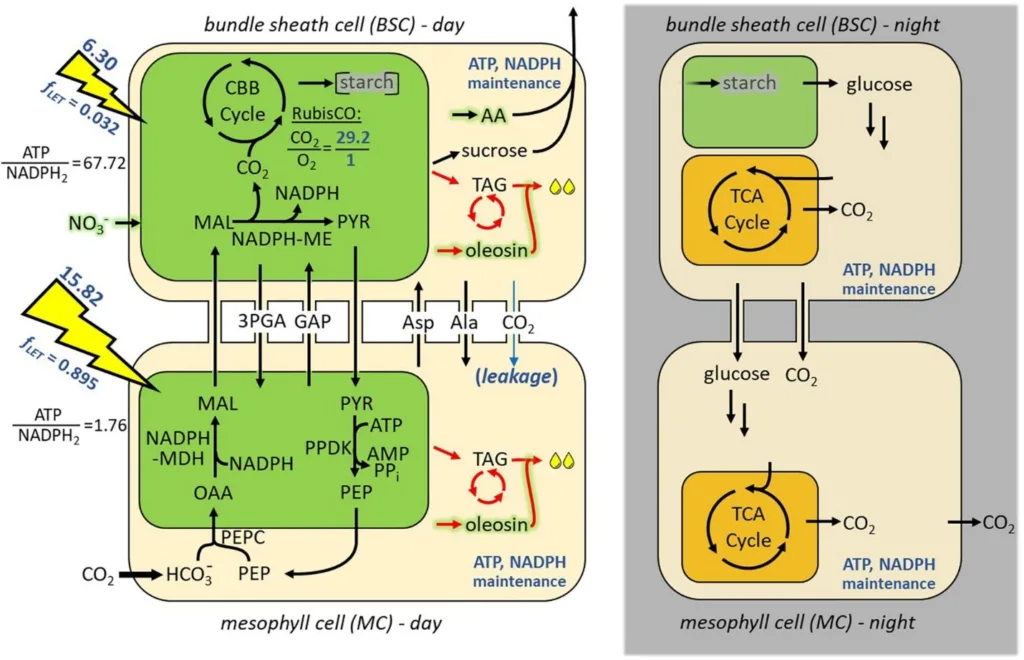Sorghum bicolor Core Metabolism Model
Themes: Feedstock Production
Keywords: Modeling
Citation
Clark, T.J., Schwender, J. Feb. 17, 2022. “Sorghum bicolor Core Metabolism Model.” University of Illinois Urbana-Champaign. DOI: 10.13012/B2IDB-1194088_V1.
Overview

Upregulation of triacylglycerols (TAGs) in vegetative plant tissues such as leaves has the potential to drastically increase the energy density and biomass yield of bioenergy crops. In this context, constraint-based analysis has the promise to improve metabolic engineering strategies. Here we present a core metabolism model for the C4 biomass crop Sorghum bicolor (iTJC1414) along with a minimal model for photosynthetic CO2 assimilation, sucrose and TAG biosynthesis in C3 plants. Extending iTJC1414 to a four-cell diel model we simulate C4 photosynthesis in mature leaves with the principal photo-assimilatory product being replaced by TAG produced at different levels. Independent of specific pathways and per unit carbon assimilated, energy content and biosynthetic demands in reducing equivalents are about 1.3 to 1.4 times higher for TAG than for sucrose. For plant generic pathways, ATP- and NADPH-demands per CO2 assimilated are higher by 1.3- and 1.5-fold, respectively. If the photosynthetic supply in ATP and NADPH in iTJC1414 is adjusted to be balanced for sucrose as the sole photo-assimilatory product, overproduction of TAG is predicted to cause a substantial surplus in photosynthetic ATP. This means that if TAG synthesis was the sole photo-assimilatory process, there could be an energy imbalance that might impede the process. Adjusting iTJC1414 to a photo-assimilatory rate that approximates field conditions, we predict possible daily rates of TAG accumulation, dependent on varying ratios of carbon partitioning between exported assimilates and accumulated oil droplets (TAG, oleosin) and in dependence of activation of futile cycles of TAG synthesis and degradation. We find that, based on the capacity of leaves for photosynthetic synthesis of exported assimilates, mature leaves should be able to reach a 20% level of TAG per dry weight within one month if only 5% of the photosynthetic net assimilation can be allocated into oil droplets. From this we conclude that high TAG levels should be achievable if TAG synthesis is induced only during a final phase of the plant life cycle.
Data
- Core Metabolism Model Code
- Four-cell Diel Model Code
- METATOOL Input Data and Code